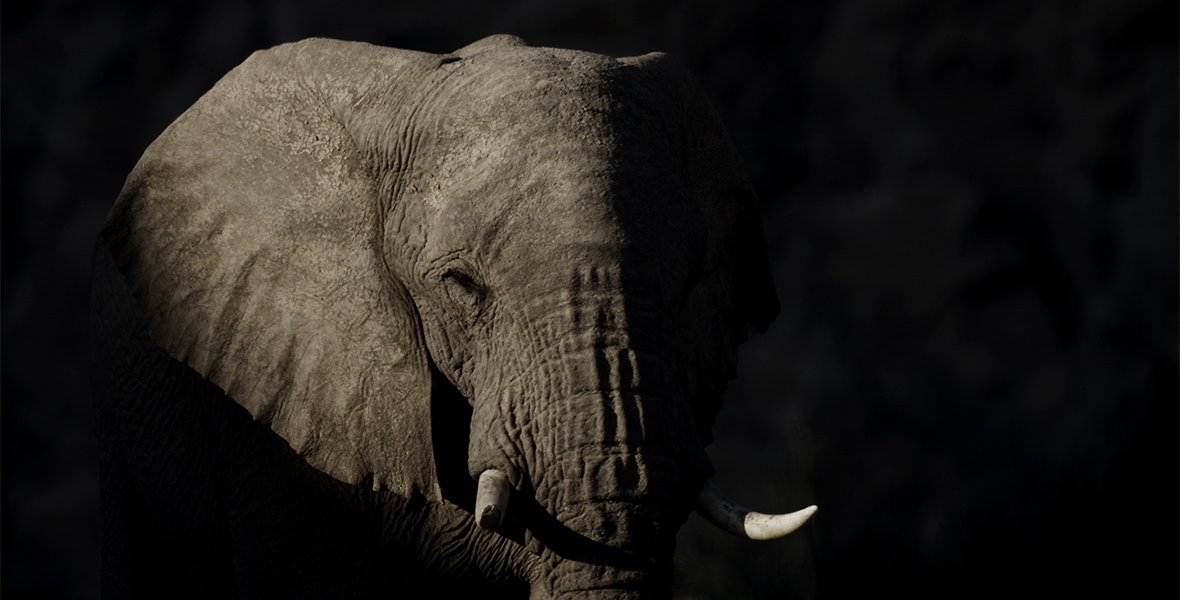By Zach Johnson
In celebration of Earth Day, National Geographic’s award-winning Secrets of franchise is traveling the world—from the savannas of Africa to the urban landscapes of Asia—to reveal the extraordinary secrets of one of Earth’s most majestic creatures: the elephant. Executive produced by Academy Award®-winning filmmaker and National Geographic Explorer-at-Large James Cameron, and narrated by Oscar®-winning actress Natalie Portman, Secrets of the Elephants will premiere on Friday, April 21, at 9 p.m. ET/PT on National Geographic, and all four episodes will stream next day on Disney+.
The largest existing land animals, elephants have roamed the Earth for millennia. But even National Geographic Explorer and elephant expert Dr. Paula Kahumbu admits she’s surprised by the secrets uncovered in the series. “Forest elephants are particularly interesting, because they’ve only recently been discovered as a different species,” she says. “It’s literally happened in just the last few years. We recognized through genetics that they are not the same as savanna elephants; they are 3 million years separated. Yet, they’ve been so poorly studied because they were always assumed to be the same. That’s part of the reason why I really was curious to find out more about them and understand the differences between forest elephants and savanna elephants.”

According to Dr. Kahumbu, the forest elephants, in particular, were “very difficult” to study. “They live in deep, dark forests,” she explains. “They have been persecuted for hundreds of years, if not more. They are very scared of humans, and as a result, they are very dangerous. If they smell humans or see humans, they will try to attack. That is a learned behavior from being persecuted for so long, being killed for their ivory or their flesh. So, it’s very tragic. But at the same time, this series is a great opportunity for us to expose these magnificent animals as a new species—for the first time on film.”
In contrast, the desert elephants in Namibia were incredibly “relaxed,” according to cinematographer Bob Poole—which, of course, made his job much easier. “They understand people are not there to hurt them, so they’re fine with [humans],” he says. “But at times it was difficult, because we were working with a 50–1,000 millimeter lens—and if an elephant comes too close, you’re stuck with a close-up. You want a wide shot, and you don’t want to move because you don’t want to disrupt the scene. We’re trying to film elephants’ natural behavior, and the best way to do that is to almost not be there.”
Capturing the natural world without interference has long been part of the National Geographic ethos. “Animals don’t have a call time, so they’re going to show up when they show up,” Janet Han Vissering, Senior Vice President, Program Development and Production at Nat Geo Wild, explains with a laugh. “And this was shot over two years.”
To Make Secrets of the Elephants, the crew worked with local experts and scientists in Africa and Asia, Han Vissering says: “It was an all‑hands‑on‑deck process.” Not only did they film in multiple locations simultaneously, but they remained mindful of their carbon footprint. “Using our local talent, connections, and scientists is important,” she shares. “We were able to utilize that in full force to get this series done in record time.”

Dr. Kahumbu says working with the local experts and scientists was one of the most exciting parts of the project. “I wanted to go on the ground and embed myself with these phenomenal people who live with these animals, but whose stories have never been told, and whose knowledge hasn’t been seen or understood by people,” she says. “In Namibia, we worked with a man who… it was almost like he could call the elephants. It was incredible! He would stand in the desert’s dry riverbeds and the elephants would walk right up to us. In Borneo, we worked with a phenomenal woman who understood each individual elephant. She knew them by name, and she had learned them as characters with personalities—and that was how she had used science and the behavior of these animals to help the communities understand their animals. And then in the Congo, we worked with rangers. They were extraordinary, because we were on foot in the forest, walking down elephant highways—and every step of the way, I knew we could be in danger. But these guys could read the forest, smell and sense whether there was any danger coming from elephants at any moment. It was profoundly moving for me—life-changing—to know we have these people on the ground. It’s so important that we capture that knowledge and use it to help elephants.”
Ultimately, Dr. Kahumbu says, “I hope that this series profoundly impacts our audiences to fall in love with elephants and understand the pressures they’re facing as human populations grow and expand into elephant rangelands. We know there are solutions, but we need help to secure these elephants and make sure we can coexist with them.”


